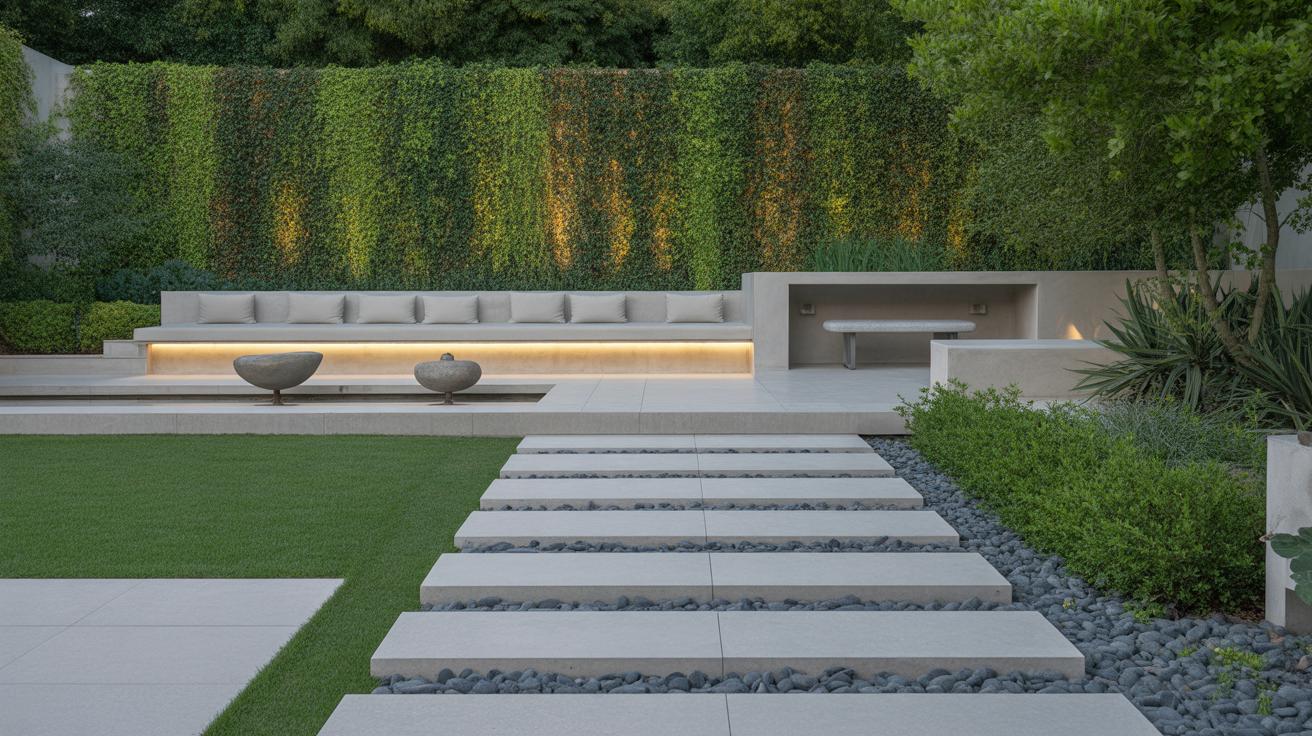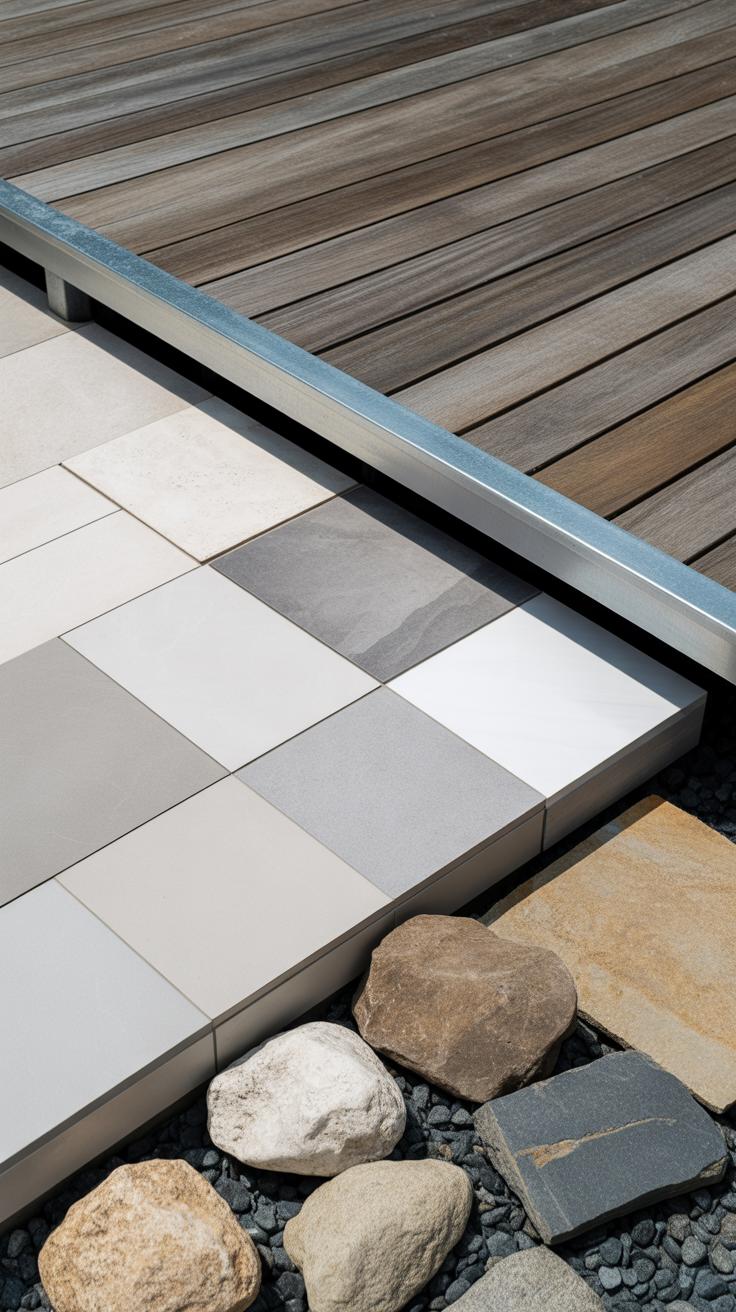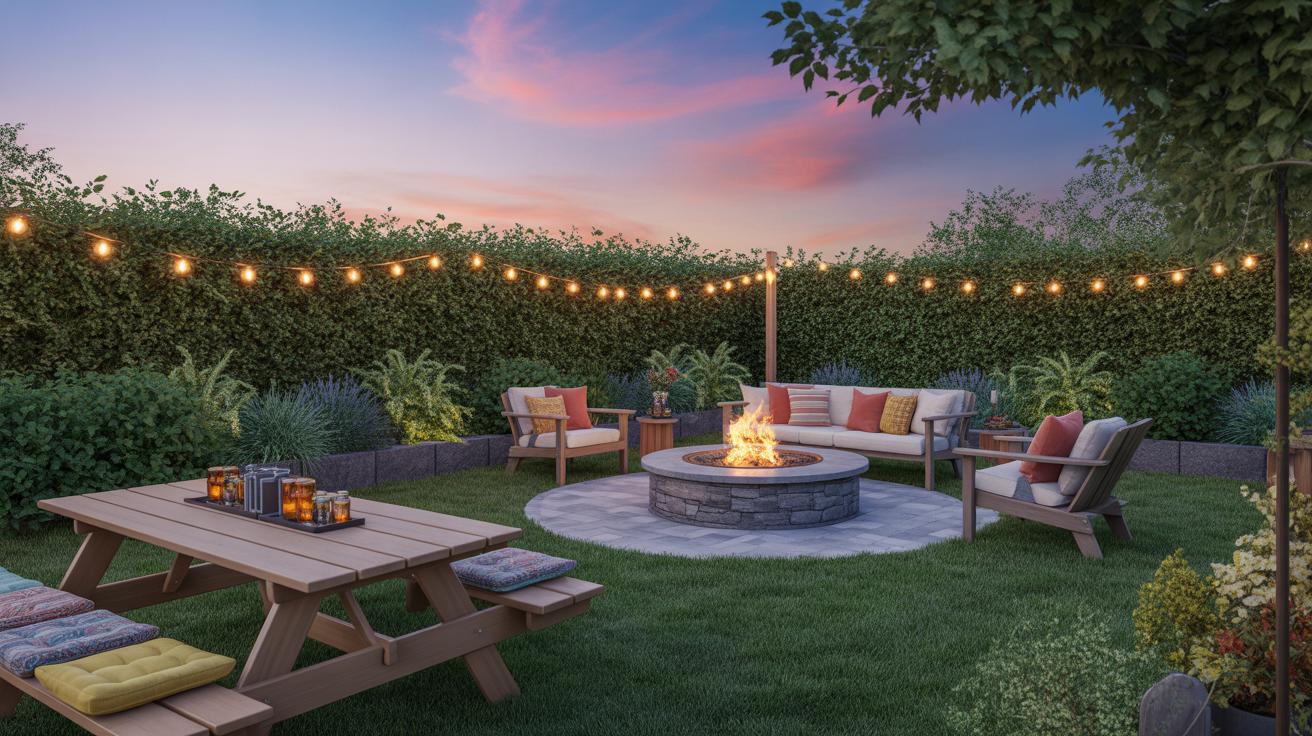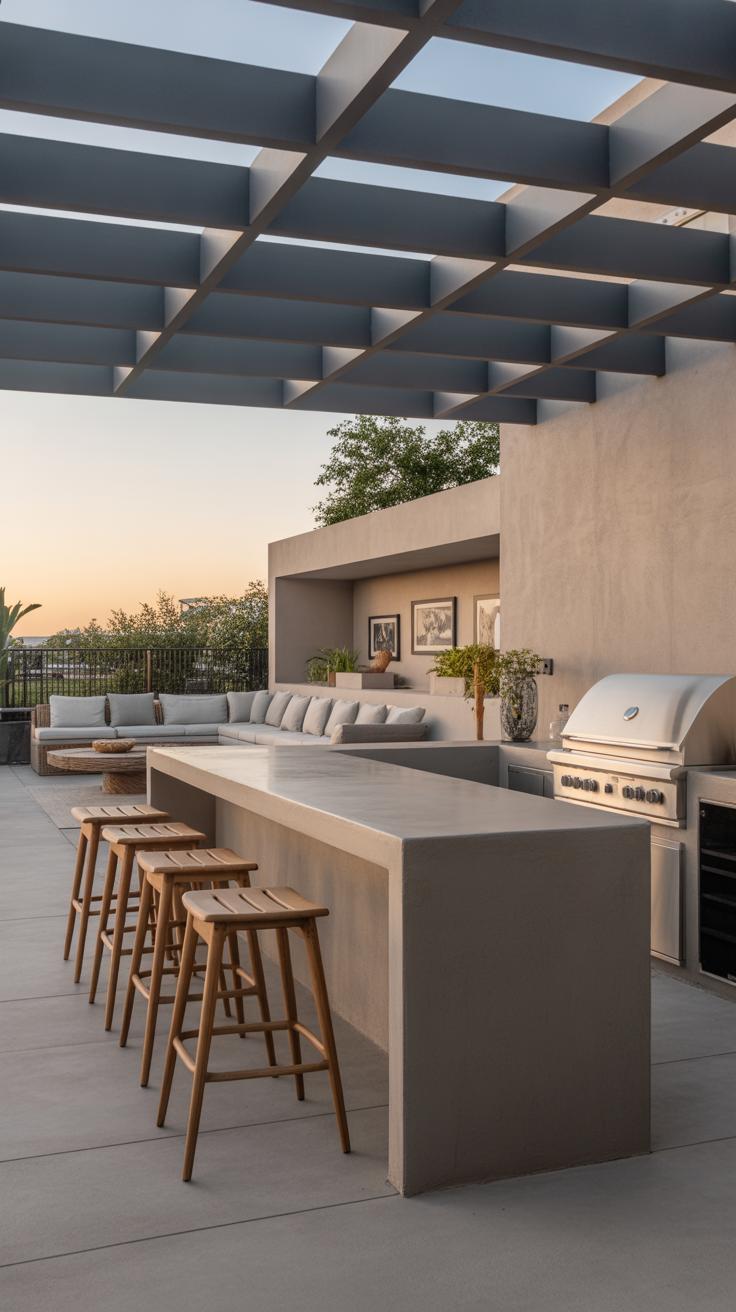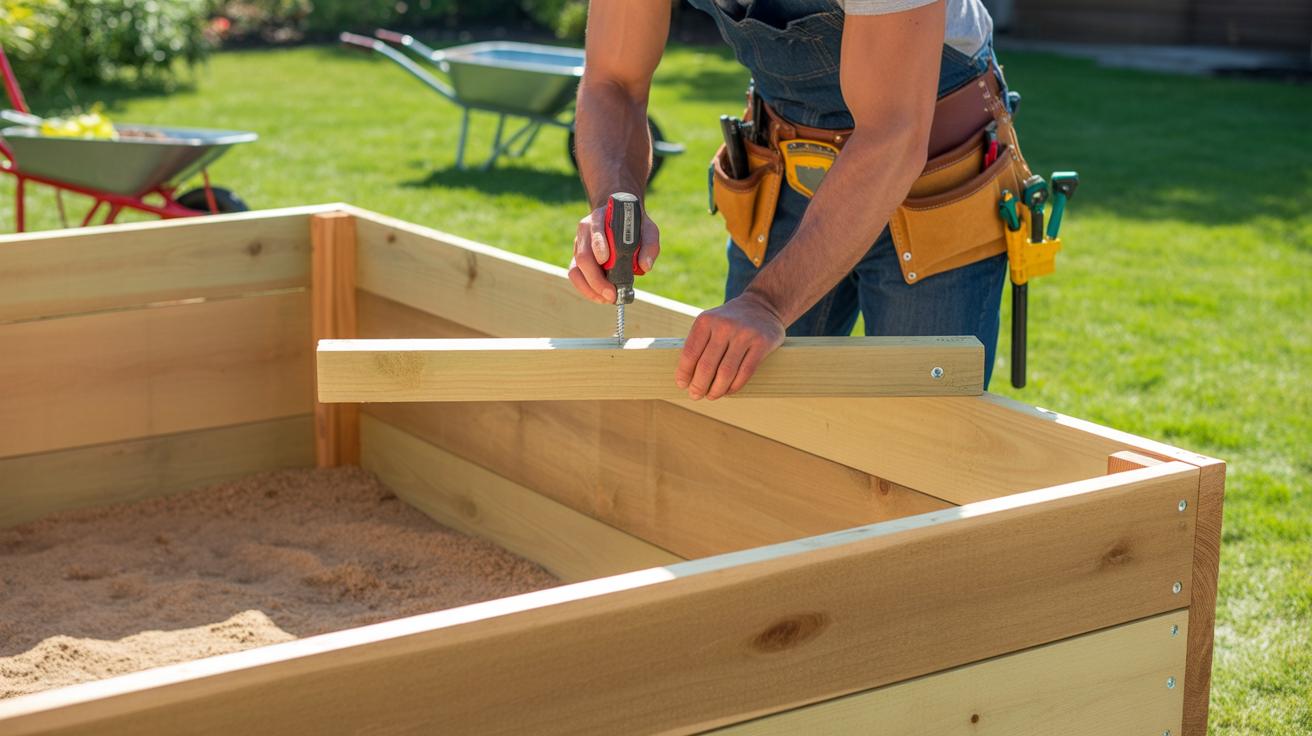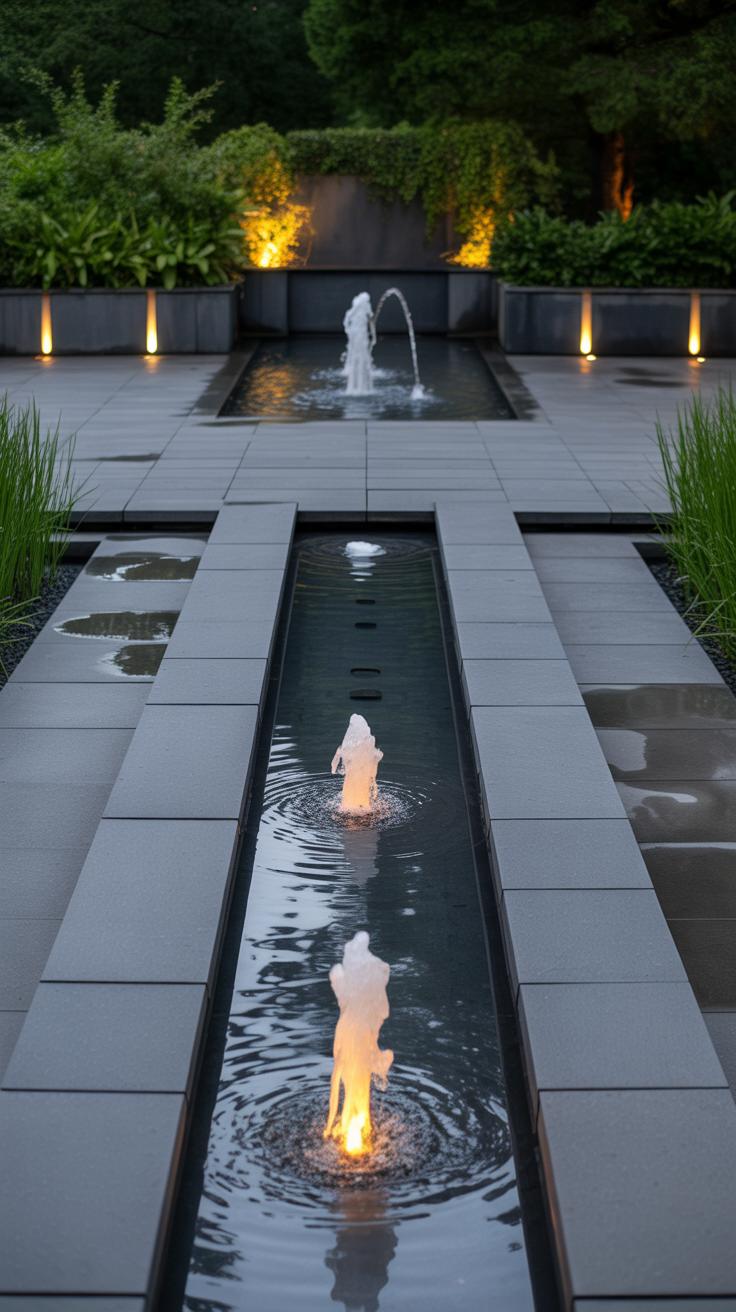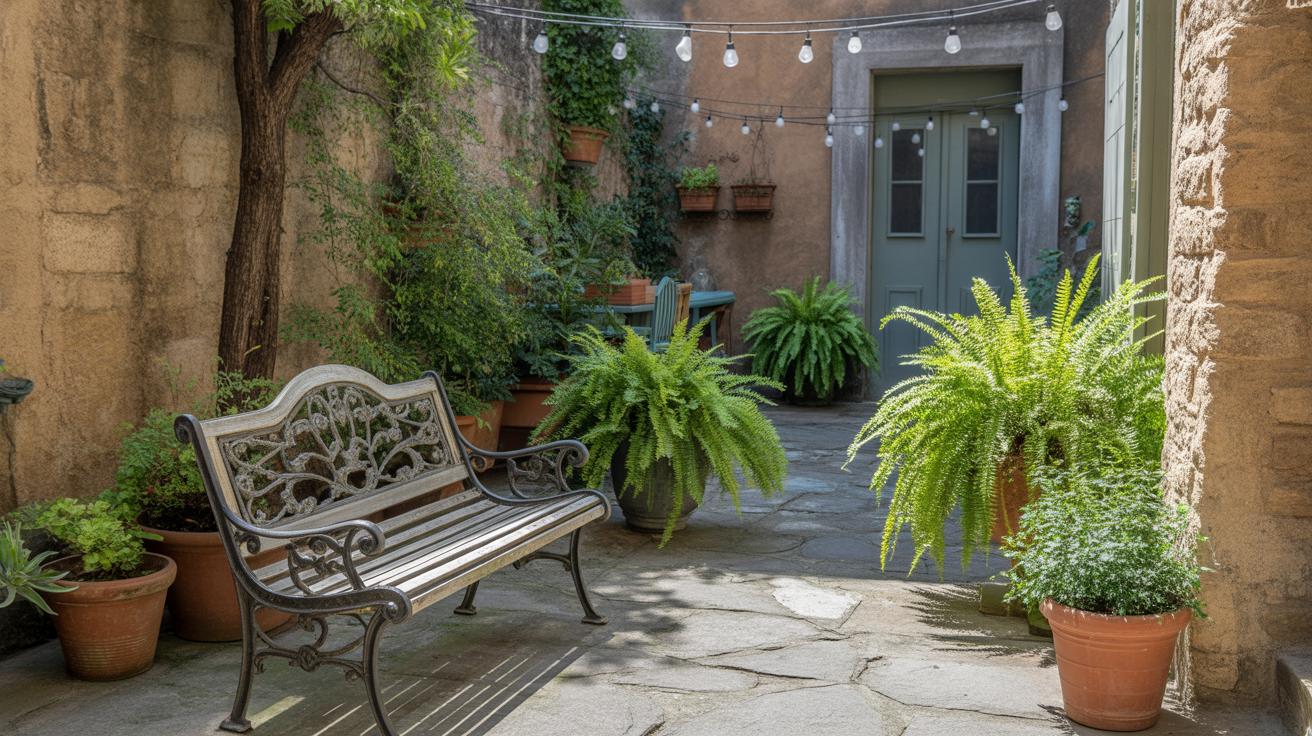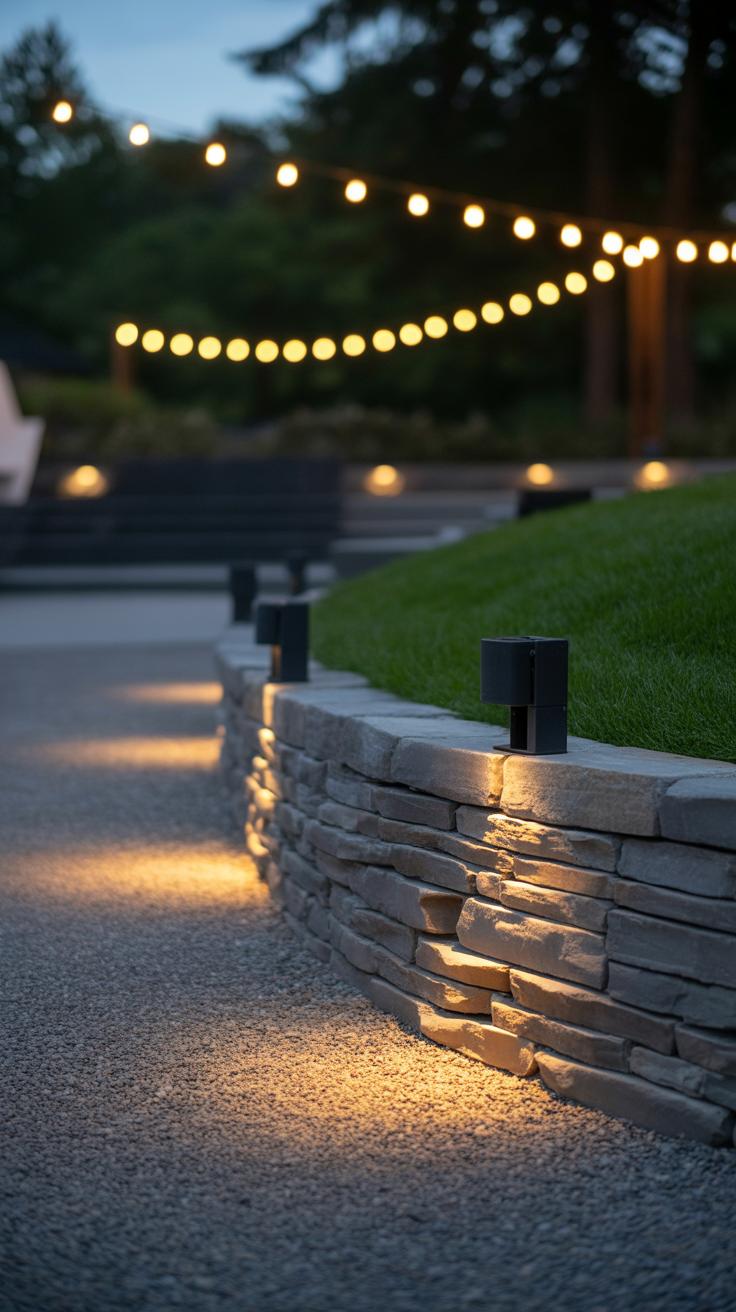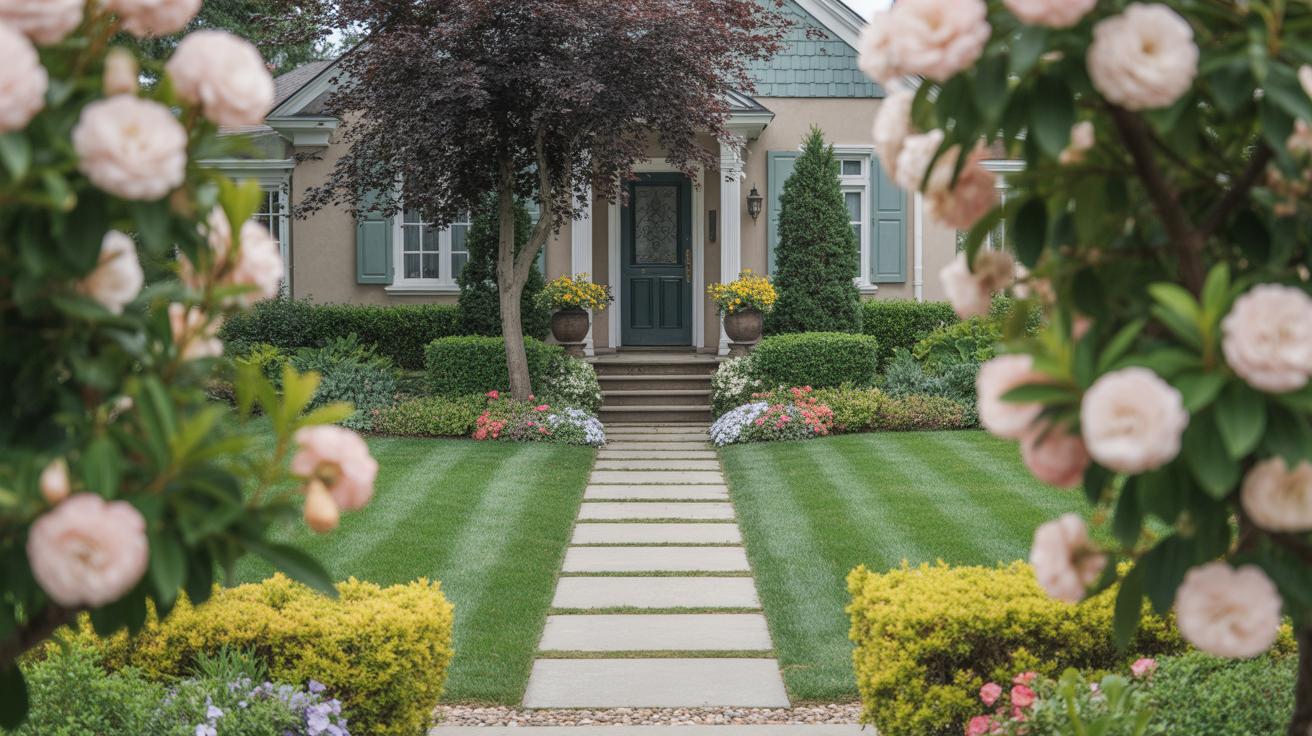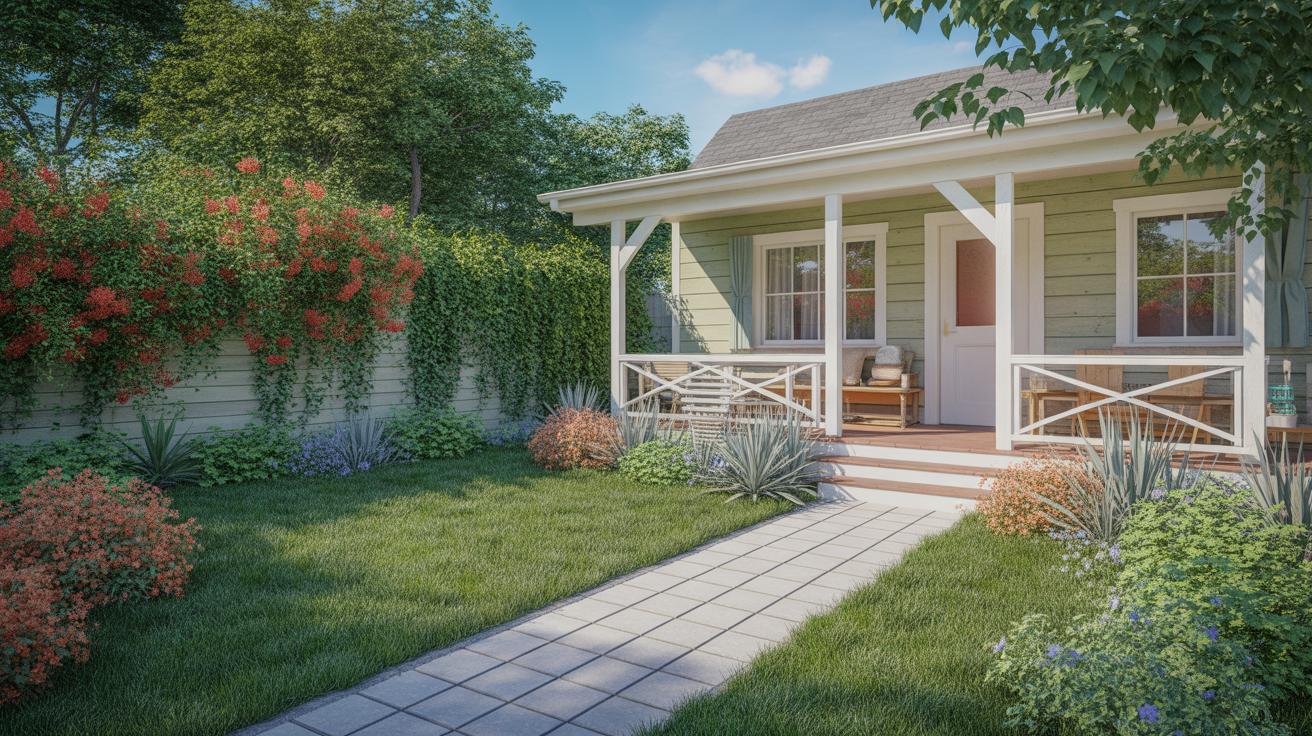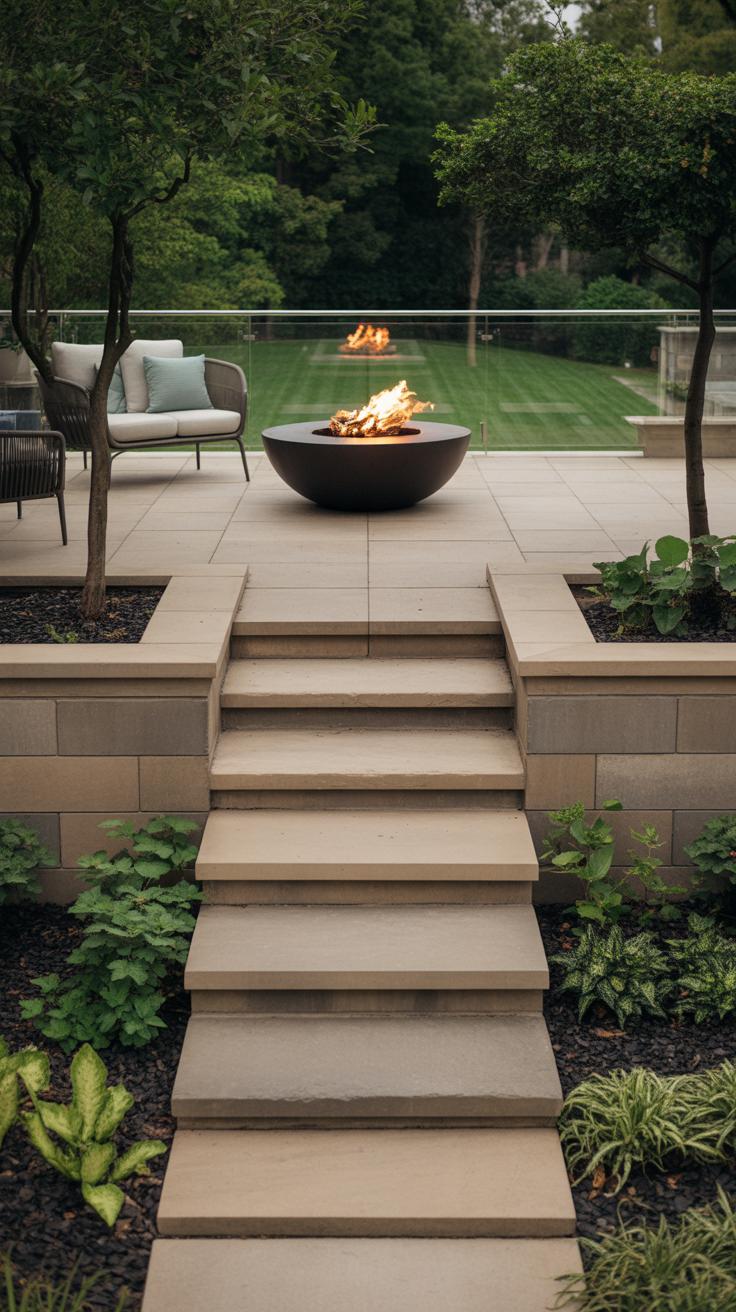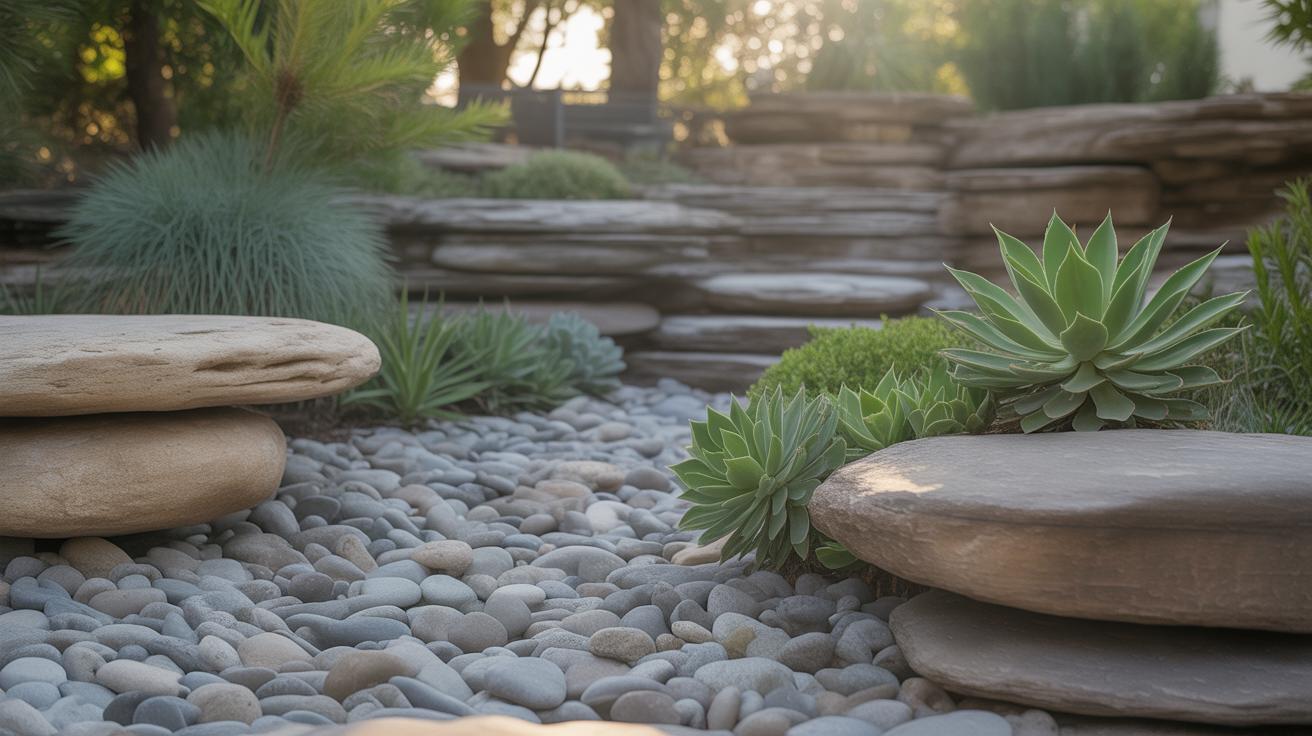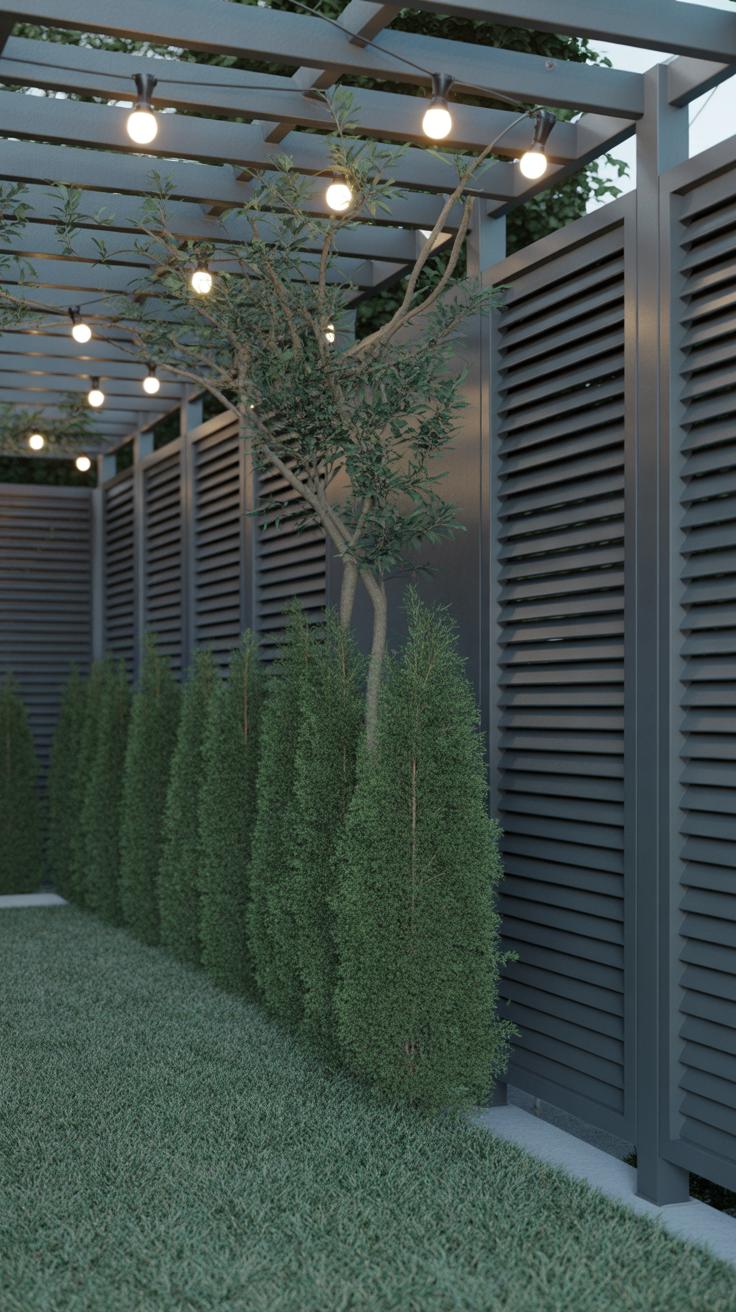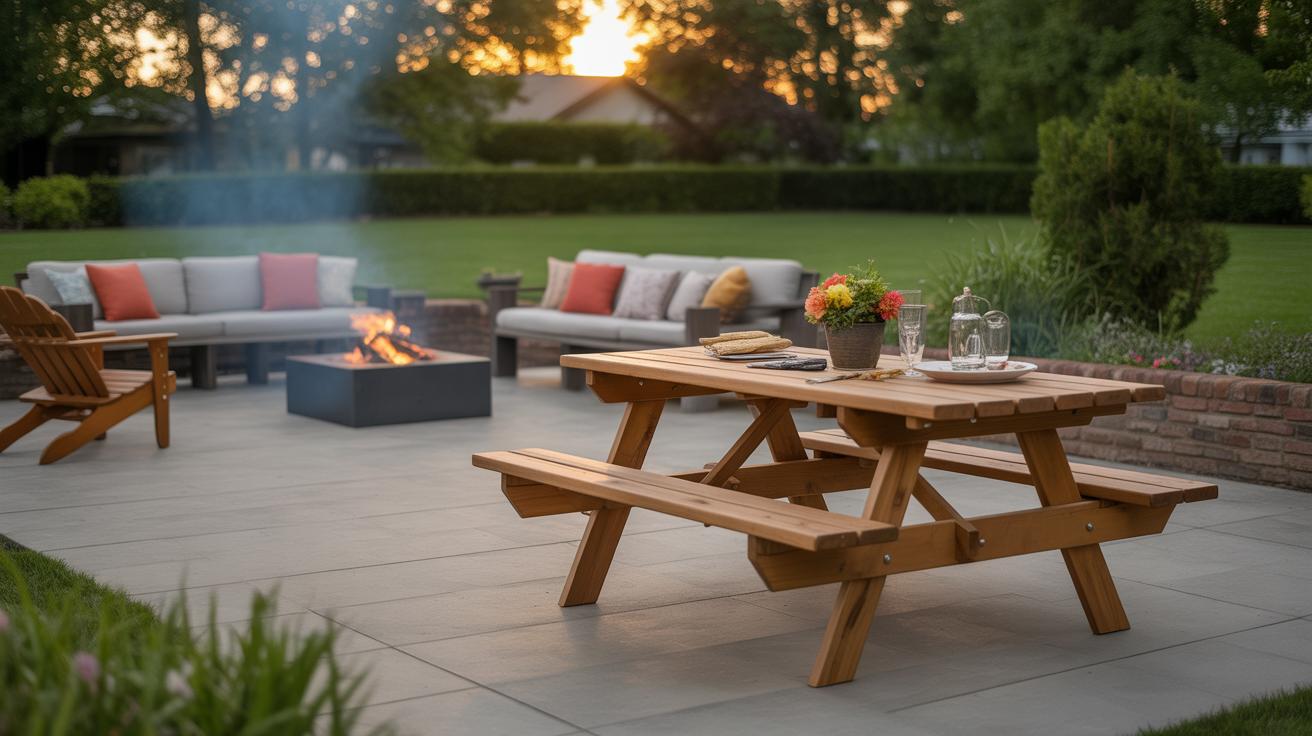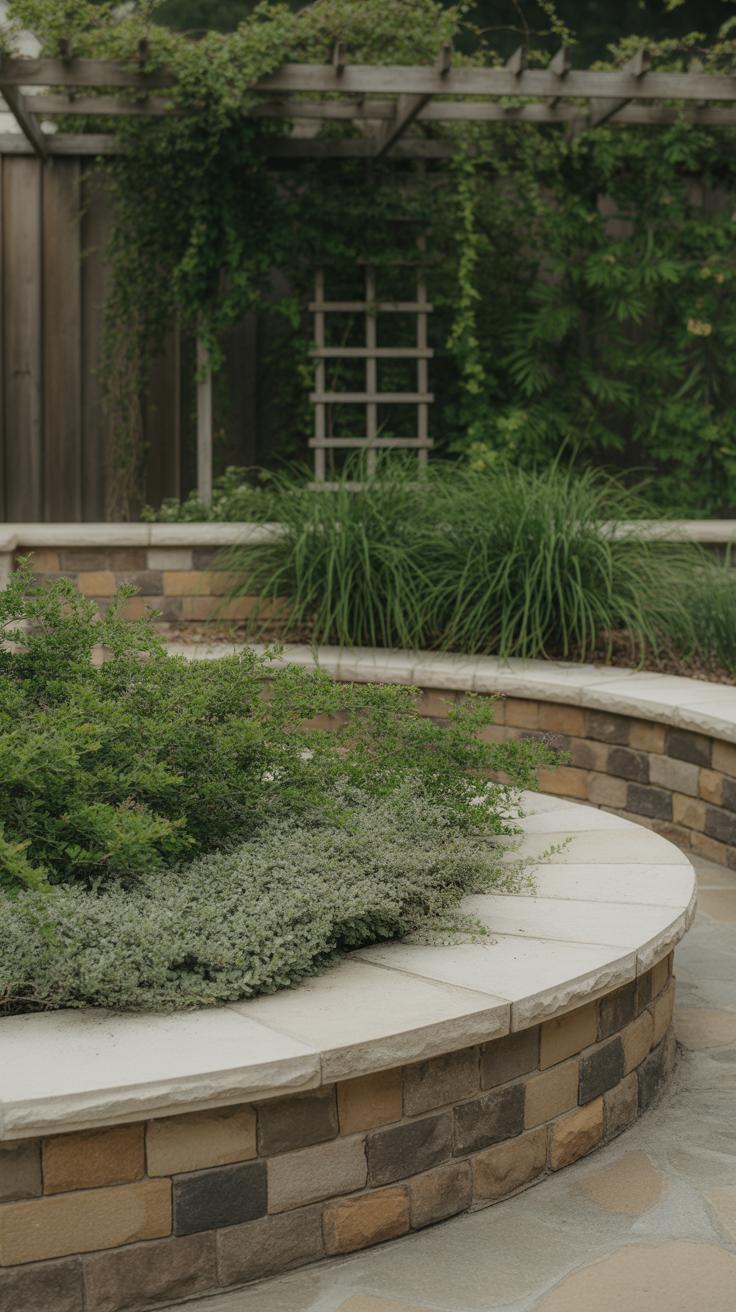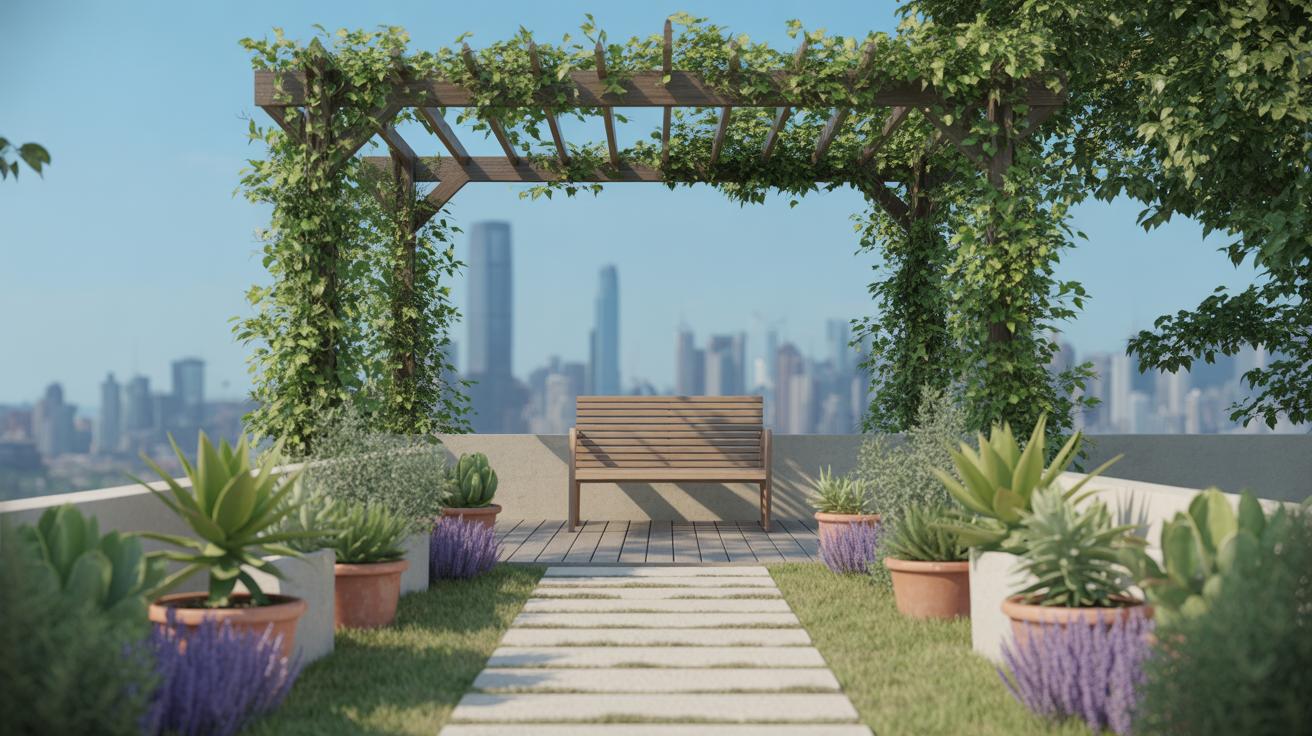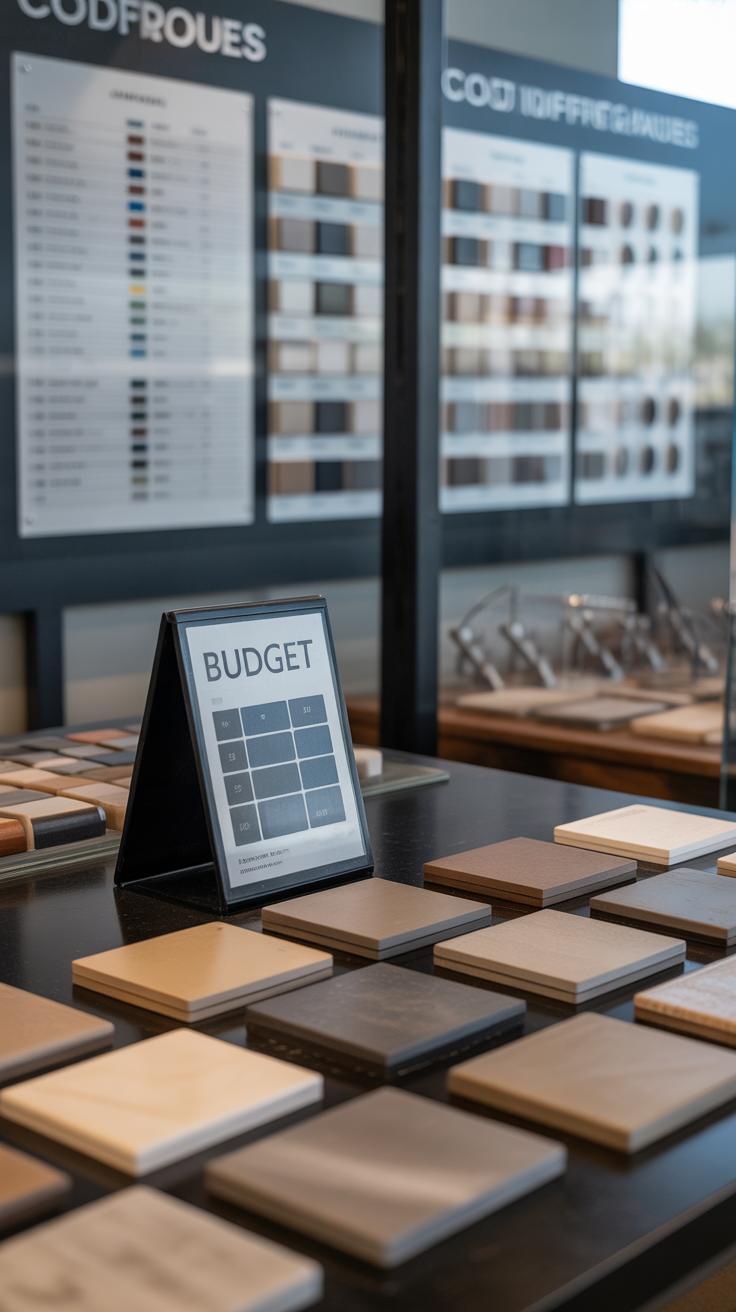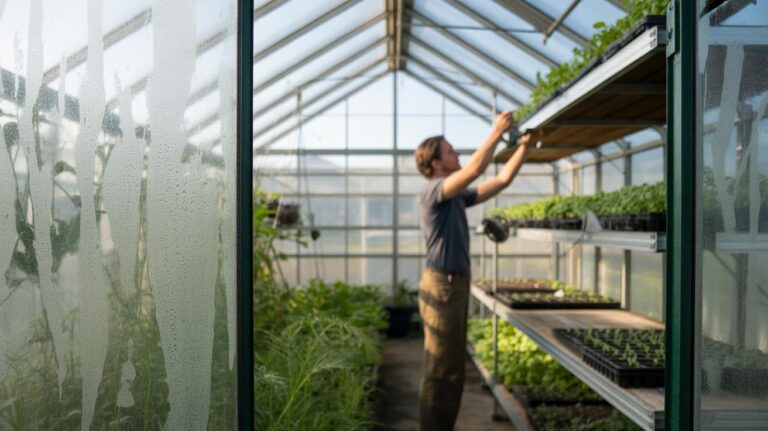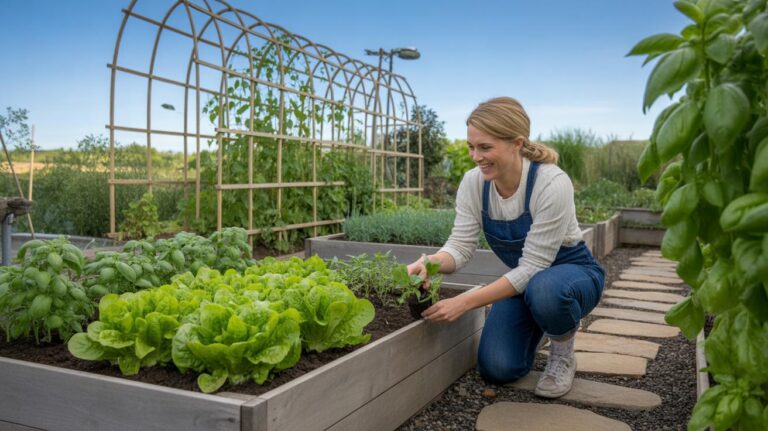Introduction
Modern backyard landscaping focuses on transforming outdoor spaces into livable, attractive, and low-maintenance areas. A key part of this is using hardscape elements—like patios, walkways, and retaining walls—that provide structure and beauty to gardens. These elements help you enjoy your backyard more and reduce the hassle of upkeep.
This article explores new trends in backyard hardscaping. We look at materials, design ideas, and ways to make your yard both practical and pleasing. If you want ideas to improve your outdoor space, this guide offers clear, simple advice you can follow right away.
Choosing the Right Materials for Your Hardscape
When it comes to hardscaping your backyard, the materials you pick can shape not just the look but also how your space ages and feels over time. Stone, concrete, brick, and wood each bring unique strengths and quirks to the table.
Natural stone stands out for its durability and timeless appearance. It handles weather changes well and usually requires little upkeep beyond occasional sealing. People love using it for patios and winding pathways because it adds a sense of permanence and character.
Brick shares some of those qualities. It’s slightly softer but still sturdy and lends a classic, warm feel to hardscapes. It tends to need a bit more care—like dealing with moss or weeds sprouting between joints—but that’s part of its charm for many. Brick works well in patios and garden edging.
Concrete offers versatility that’s hard to beat. Modern techniques allow for smooth finishes, bold geometric shapes, and even colors or stains to mimic other materials. It’s generally low-maintenance but can crack if not poured or designed properly. You’ll often see concrete in sleek patios or minimalist walkways.
Wood isn’t the first choice for hardscaping in harsh conditions, but it brings warmth and texture in decks and pergolas. Maintenance can be heavier—think sealing and staining—but mixing it with plants softens the space, making it feel more inviting and natural. It often complements concrete or stone well in contemporary setups.
Have you thought about how each material will wear where you live? Choosing with climate and upkeep in mind might save headaches down the road—plus avoid surprises involving maintenance or replacement.
Designing Functional Outdoor Living Areas
Planning Outdoor Kitchens and Dining
When creating an outdoor kitchen, the layout really shapes how you use the space. Most people lean toward an L-shape or a U-shape to keep everything within easy reach—grill, sink, prep area—it all flows better. You might be tempted to go all out, but sometimes simple works best, especially if you don’t cook outdoors daily.
For durability, materials like natural stone or concrete countertops can handle weather and wear better than wood. Brick or pavers make solid flooring that stands up to spills and foot traffic without much fuss. I’ve often seen folks combine these materials, balancing durability with style, which keeps the space feeling grounded yet inviting. Think about appliances too: built-in grills and weather-resistant cabinets make a big difference in keeping things functional.
Don’t forget seating nearby. Dining tables or casual bar-style counters create spots where people can gather while you cook. It’s about making the backyard not just a place to prepare meals but somewhere everyone wants to hang out.
Creating Cozy Fire Pit Zones
Fire pits add warmth and a social focus but vary widely in design. Some prefer a simple circular pit with gravel around it and benches, while others go for custom stone rings that match their hardscape. I tend to like those with built-in seating walls made of stone or brick—it feels like the fire pit anchors the space.
You could also think about mixing materials—maybe a concrete slab base with wooden benches, or some combination of smooth stone and rustic brick. The seating arrangement matters too; it should encourage conversation but accommodate different group sizes. Placing the fire pit near the house or garden can change how often you use it—close enough to grab drinks inside, but far enough to avoid smoke issues.
At times, I’ve wondered if a fire pit is just a nice-to-have versus a must for social spaces. But when friends show up unexpectedly, it becomes the heart of the evening. So maybe it’s worth the investment, even if it doesn’t get used every single day.
Incorporating Water Features in Hardscapes
Water features bring a unique appeal to backyard hardscapes by adding movement and sound that soften hard surfaces. When you think about placing a pond, fountain, or waterfall, location matters a lot—not just for aesthetics but for maintenance and safety too.
Small fountains and ponds nestle nicely into corners or alongside patios. They don’t overpower the space but invite calm and quiet. A gently bubbling fountain near a seating area can make afternoons feel more peaceful, as you get caught up in its soothing rhythm. A simple pond edged with stone can become a natural pause point in your design. But keep in mind, these require regular cleaning to avoid algae growth and water stagnation. You might find yourself spending a little more time than expected tending to them.
On the other hand, larger waterfalls or streams demand more planning. They often become the centerpiece of the yard, drawing the eye and setting a mood. Incorporating them safely means thinking about water depth, slip-resistant surfaces, and child-proof boundaries. The sound of rushing water can be immersive, but it might also clash with other outdoor noises or activities. Still, when done right, these features can redefine your backyard’s personality, making it feel like a retreat.
Whether small or large, maintenance routines vary, so consider how much time and effort you’re willing to invest. And don’t underestimate the impact of natural sunlight and shade on water clarity and temperature, which can mess with your expectations. Adding water element to your hardscape is more than decoration. It’s about crafting an experience that fits your lifestyle—calm, vibrant, or somewhere in between.
Using Lighting to Highlight Hardscape Features
Lighting your backyard hardscape can change everything once the sun goes down. Not only does it add a layer of safety, but it also gives your outdoor space a different mood, one that’s quite hard to achieve otherwise. I’ve often found that just a few well-placed lights completely transform how a patio or pathway feels at night.
Path and Step Lighting Options
There are several ways to light paths and steps that you might want to consider:
- Low-profile LED strip lights along the edges create a gentle glow. They’re subtle but reliable.
- Solar-powered stake lights are easy to install and don’t require wiring, though their brightness can vary depending on the sun.
- Recessed lights built into steps or paving stones give a modern touch without cluttering the space.
- Motion-sensor lights add a convenience factor but can sometimes feel unexpected if they pop on suddenly.
You want enough light to prevent trips or stumbles but not so much that it feels like walking under a streetlamp. I think the right balance depends also on how you mostly use your backyard. Do you entertain a lot after dark, or is occasional navigation your primary concern?
Accent Lighting for Focal Points
Accent lights serve more than just illumination; they draw the eye and highlight special features:
- Soft uplights placed around a water fountain can catch the movement of water and create subtle shimmer effects.
- Patios benefit from warm, evenly spaced lighting, which invites people to linger longer.
- Fire pits look stunning when ringed with downward-facing lights, which enhance the fire’s natural glow without competing with it.
Choosing the color temperature of lights here is key. Too cool, and your space might feel sterile, too warm and details might get lost. I’ve grappled with this personally, settling somewhere in the middle to keep everything feeling welcoming but still crisp.
Lighting is one of those design choices you can tweak endlessly. Sometimes it’s not just what you add, but what you leave dark, that makes your hardscape come alive at night. Have you thought about how darkness plays into your outdoor experience?
Creating MultiLevel Backyard Spaces
Building Durable Retaining Walls
Retaining walls do more than just hold soil in place. They stop erosion, especially if your yard slopes—or sometimes even when it doesn’t, but the soil tends to wash away in heavy rain. By using materials like concrete blocks, natural stone, or timber, you craft solid barriers that can last years. These walls also create pockets of space where you can plant flowers, shrubs, or even small trees. It’s kind of like turning a problem into an opportunity. I remember seeing a backyard where the owner built a curved stone retaining wall; it broke up a uniform slope and suddenly the garden felt cozier, more intimate.
Keep in mind, drainage is a must. Without it, those walls can fail, no matter how well they’re built. So always plan for water flow behind the wall, using gravel or drainage pipes.
Designing Terraced Gardens and Steps
Terraces and steps help you handle different yard heights by dividing space both visually and physically. They break a big hill into smaller, flatter areas where you can do different things. Think: a dining nook up top, a play area in the middle, a vegetable garden below. Steps then become more than just functional—they guide movement and invite exploration.
Sometimes, a winding set of stone steps feels more inviting than a straight flight. It’s subtle, but those design choices influence how you experience the yard. And terraces can double as seating walls or support for raised planting beds. You don’t have to think only in terms of levels; think about how people interact with each segment. Does a transition feel abrupt or gentle? Does it encourage you to wander, or just pass through?
What’s interesting is that multi-level layouts make you consider sun angles, wind flow, and privacy differently. These features don’t just solve elevation problems; they bring purpose to every inch of your outdoor space.
Adding Privacy and Wind Protection with Hardscaping
Using Walls and Fences Creatively
Walls and fences do more than mark boundaries. They can be central design elements that bring privacy and calm to your backyard. When choosing materials, think beyond plain wood or basic cinder blocks. Textured concrete blocks, corten steel panels, or even glass walls with frosted sections lend a contemporary feel that modern yards often seek.
Styles play a big role, too. Horizontal slats create a sleek, airy look, while taller, solid panels block sightlines and soften noise. Sometimes, mixing materials—like stone bases topped with metal or wood—adds depth and interest without overcrowding the space.
One thing I noticed in my own outdoor space is that partial walls work well for privacy without feeling closed off. You get some protection but still maintain openness. Can you imagine having a tall, solid fence all around? It could feel a bit like a cage after a while.
Incorporating Pergolas and Screens
Pergolas are a clever way to add shade and privacy without fully enclosing your yard. I’ve found that adding climbing vines transforms a simple pergola into a living shelter, softening its edges and buffering wind. Plus, the dappled light underneath feels comfortable – not too bright, not too dark.
Screens offer flexibility, too. From slatted panels that provide partial views to woven metal screens that catch the breeze, these structures can break up the yard and create cozy corners. They don’t block space outright, which sometimes you might want to avoid if your yard is small or if you want an open feel.
Have you considered how much wind actually affects your outdoor time? Adding these elements can turn a chilly spot into a year-round hangout, and the bonus is that they give your yard personality. It’s like adding subtle walls that breathe rather than shut everything out.
Combining Hardscapes with Plants for Balance
Hardscapes can sometimes feel a bit harsh or cold, especially when stone or wood dominates the space. That’s where plants come in—they soften edges and add life. One way to approach this is by using planting beds right alongside your hardscape elements. For example, lining a stone pathway with low, bushy plants can create a gentle transition from the rigid surface to the garden. It also brings color and texture without overwhelming the design.
When thinking about planting beds, consider layering plants of different heights and leaf shapes to avoid a flat appearance. Maybe grasses next to succulents, or flowering perennials mixed with evergreens. It’s not always about perfection here—sometimes letting a few plants spill over onto the pavement breaks up the neatness in a welcoming way.
Planting Beds Along Hardscape Edges
Designing planting beds along the edges of patios or retaining walls is a great way to soften hard lines. You might want to pick plants that thrive in the microclimate created by these structures; walls can hold heat and dry out soil faster. So choosing drought-tolerant or sun-loving plants tends to work better. Placing seasonal flowers in these beds keeps things interesting as the year goes on, but mixing in some evergreens adds consistency.
Think about the edges as opportunities to frame the space—not just to fill them. A curved bed might contrast nicely with straight edges of paving stones. The plants don’t have to be densely packed either. Sometimes a bit of spacing lets individual plants stand out, creating a subtle rhythm that is easier on the eyes.
Using Containers and Green Walls
Containers offer flexibility that planting beds don’t always provide. You can move pots around to change your scene or shelter delicate plants during harsh weather. Plus, container gardens let you include more unusual species that might not suit your soil. Grouping containers on a porch or within a patio can add pockets of greenery without requiring a full garden bed.
Green walls really caught my attention lately. Vertical gardens attach to fences or walls, and they use little space while providing a strong natural element. They work well when you want to combine wood or stone with a lush look but have limited ground space. Some green walls use modular panels with native plants that need little maintenance. It’s remarkable how much life a vertical garden can inject into an otherwise plain wall.
Mixing pots and green walls with your main hardscape invites a dynamic balance—plant textures against the rigidity of stone or wood. The contrast feels natural and never stiff. You start to see your yard less as a collection of separate elements and more as a thoughtful whole that breathes.
Maintaining Your Hardscape for Longevity
Keeping your hardscape in good shape is less complicated than it might seem, but it does require some attention. You can’t just set it and forget it—well, not if you want it to last. For stone, concrete, and wood surfaces, regular cleaning is key. Dirt and grime build-up can wear down materials over time. Aim for a thorough cleaning at least once or twice a year. You might find power washing helps with concrete, while a gentle scrub works better for stone or wood.
Sealing is another step that some overlook, but it’s quite crucial. Depending on the material, sealing every few years can protect against moisture, stains, and fading. Wood decks usually need resealing more often—around every one to two years—while stone and concrete slabs could stretch that interval to three or four years.
Cracks and chips may seem minor at first, but they can grow bigger and more problematic if ignored. Small hairline cracks in concrete can be filled with a simple patching compound to prevent water infiltration and further damage. Wood pieces showing splinters or rot often call for quick sanding, patching, or replacing sections before the issue spreads. Sometimes, replacing one damaged paver is easier than trying to fix a flawed patch. Tackling these repairs early could save you from extensive work down the line, which tends to be more costly.
Have you noticed any spots in your hardscape that seem to wear faster? Maybe it’s worth checking those before they become bigger headaches. A little maintenance now might feel tedious, but it really pays off—and you might even find the process a bit satisfying once you get started.
Planning Your Hardscape Within Your Budget
When thinking about your backyard hardscape project, setting realistic financial boundaries can really steer the whole process. It’s tempting to want everything done at once, but splitting the work into phases lets you manage costs more smoothly. For instance, start with a basic patio or pathway, then add seating walls or fire pits later. This way, you don’t feel overwhelmed by the price tag upfront, and the project evolves naturally over time.
Deciding what to build first depends a lot on how you use your space. Maybe a functional walkway or a simple seating area makes sense before more elaborate features. Prioritize elements that boost daily enjoyment or address immediate needs, like controlling erosion or creating shade. Sometimes, you might even find smaller sections that can stand alone while waiting for the larger pieces to come together.
Finding affordable materials doesn’t always mean settling for cheaper quality. Concrete pavers, for example, can mimic higher-end stone at a fraction of the cost, and buying leftover or remnant materials from suppliers can save a bundle. When it comes to labor, hiring skilled local contractors for parts of the job and handling simpler tasks yourself—like spreading gravel or planting around hard surfaces—can cut down bills without a visible drop in quality. It’s about balancing what you can do and what truly needs an expert touch, even if that feels a bit like trial and error at times.
Conclusions
Backyard hardscaping is more than laying stones or building walls. It shapes your outdoor world to fit your lifestyle and tastes. New trends show how to mix style with function, making your yard a space worth using every day. From choosing materials to adding features, there are many ways to work hardscapes into your plan.
Think about your yard as a place to relax, play, and connect with nature. Use the ideas here to start your journey. Your backyard can become a place you love, with hardscape designs that last, look great, and add to your home’s value.

